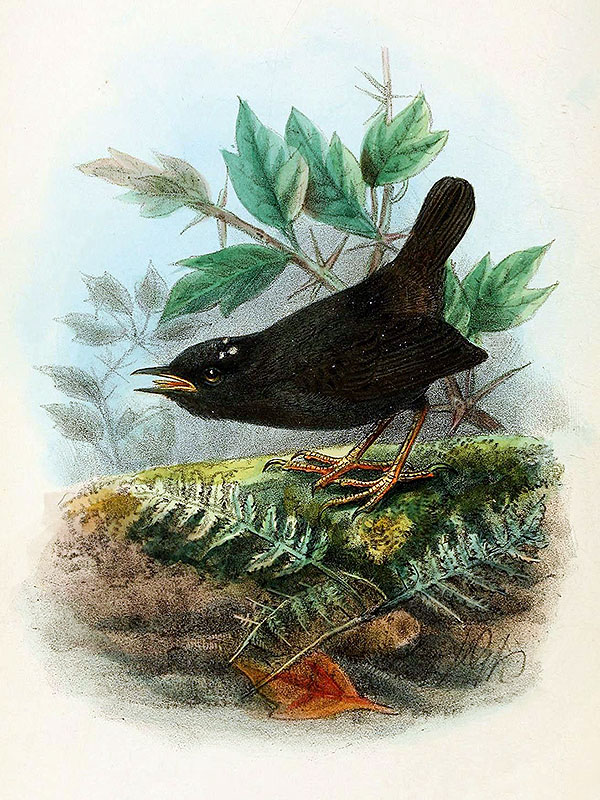Nun ja, viele – laut einer neuen Studie (deren Fertigstellung offenbar etwa 40 Jahre gedauert hat!!!).
Die Tapaculos der Gattung Scytalopus sind durchweg kleine, meist gräulich gefärbte, unauffällige Vögel mit schlechten Flugfähigkeiten, die im dichten Unterholz der Andenwälder im Südwesten Südamerikas leben (einige Arten kommen nördlicher vor).
Der Magellantapaculo (Scytalopus magellanicus (J. F. Gmelin)) (siehe Abbildung unten) ist einer von ihnen und Teil eines Komplexes, der seinen Namen teilt, dem Scytalopus [magellanicus]-Komplex, der wiederum mehrere Arten umfasst, von denen einige erst vor kurzem entdeckt und beschrieben worden.

Darstellung aus: ‘Richard Crawshay: The birds of Tierra del Fuego. London: B. Quaritch 1907’
(public domain)
Nun, dieser Komplex ist jetzt noch artenreicher geworden, mit der Beschreibung von drei völlig neuen Arten, die sich von anderen unterscheiden: dem Jalcatapaculo (Scytalopus frankeae), dem Weißflügeltapaculo (Scytalopus krabbei) und dem Ampaytapaculo (Scytalopus whitneyi), sowie einer Unterart (die selbst erst 2010 beschrieben wurde), die in den Artrang erhoben wurde, dem Lojatapaculo (Scytalopus androstictus). [1]
*********************
Quelle:
[1] Niels K. Krabbe; Thomas S. Schulenberg; Peter A. Hosner; Kenneth V. Rosenberg; Tristan J. Davis; Gary H. Rosenberg; Daniel F. Lane; Michael J. Andersen; Mark B. Robbins; Carlos Daniel Cadena; Thomas Valqui; Jessie F. Salter; Andrew J. Spencer; Fernando Angulo; Jon Fjeldså: Untangling cryptic diversity in the High Andes: Revision of the Scytalopus [magellanicus] complex (Rhinocryptidae) in Peru reveals three new species. The Auk 137: 1-26. 2020
*********************
bearbeitet: 24.04.2024











